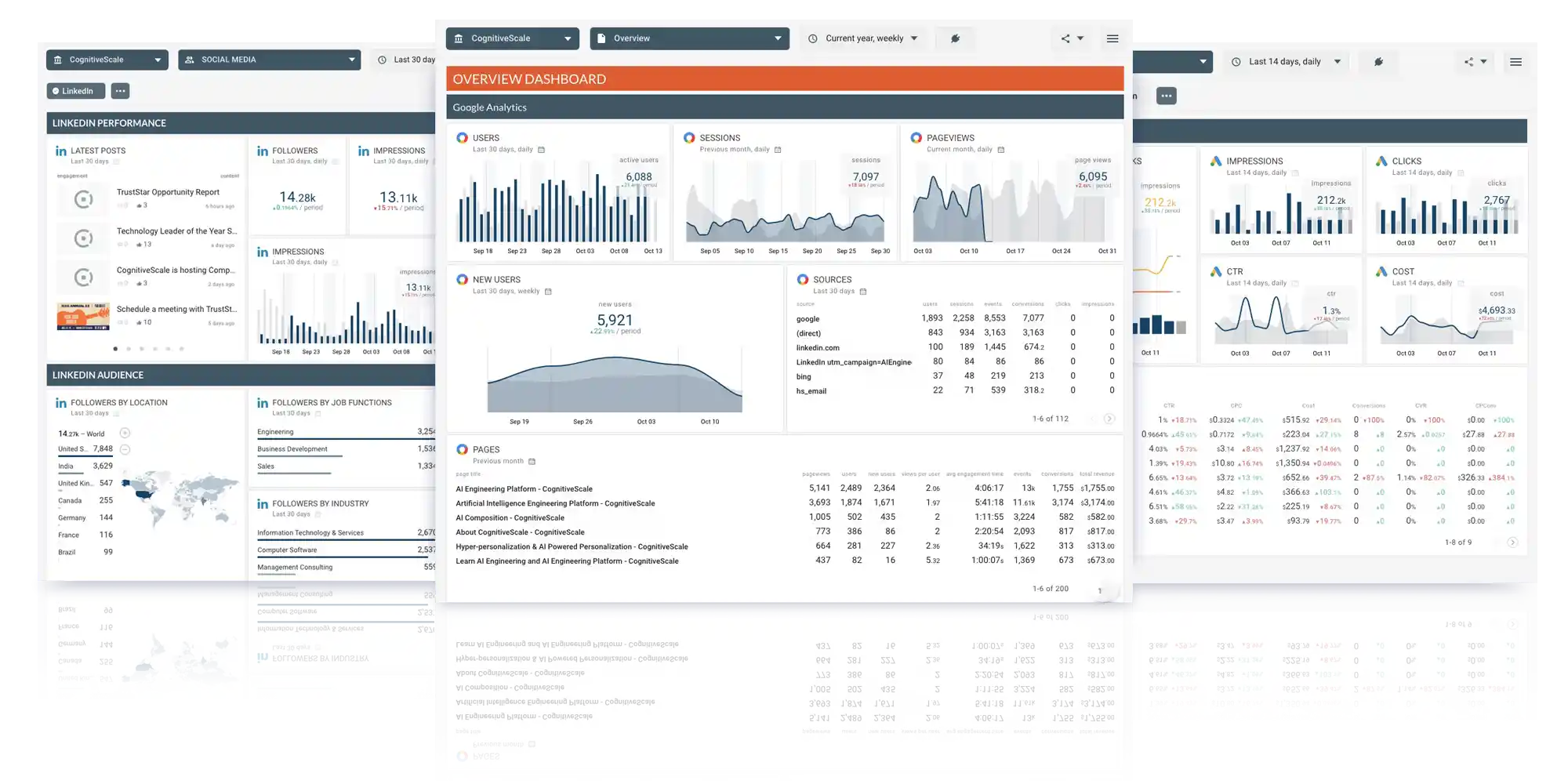How to Measure the ROI of Your Marketing Spend
Marketing ROI (Return on Investment) is the clearest way to understand if your campaigns, website redesigns, or branding efforts are actually delivering value
As a small business owner, every dollar you spend on marketing and design needs to pull its weight. At Impress Design, I’ve spent over two decades helping companies in Parker and beyond turn creative investments into measurable growth—and I know firsthand that measuring marketing ROI isn’t just about crunching numbers, but about making smarter decisions that fuel your business’s future.

In this article
- Why Measuring Marketing ROI Matters
- What are the KPIs I should focus on for success
- Top Analytics Tools for Small Businesses
- Reporting Strategies That Work
- Tips from the Field
Why Measuring Marketing ROI Matters
Marketing ROI (Return on Investment) is the clearest way to understand if your campaigns, website redesigns, or branding efforts are actually delivering value. By quantifying what works and what doesn’t, you can confidently allocate your budget, refine your strategies, and build a foundation for sustainable growth.
What are the KPIs I should focus on for success
For small business marketing success, the top KPIs you should focus on are those that directly impact growth, profitability, and customer relationships. Here are the most important ones:
- Revenue Growth: Tracks how much your business income is increasing over time, providing a clear measure of your ability to scale and attract customers.
- Sales Conversion Rate: Measures the percentage of leads or website visitors who become paying customers, indicating the effectiveness of your marketing and sales efforts.
- Customer Acquisition Cost (CAC): Calculates how much you spend to gain each new customer, helping you manage your marketing budget efficiently.
- Customer Lifetime Value (CLV): Estimates the total revenue a customer brings to your business over their relationship with you, guiding how much you should invest in acquisition and retention.
- Marketing ROI: Compares the revenue generated from marketing activities to the costs, so you know which campaigns are delivering real value.
- Website Visitors: Tracks total and unique visitors, as well as traffic sources, to measure the reach and effectiveness of your online presence.
- Email Campaign Performance: Looks at open rates, click-through rates, and conversions to assess how well your email marketing is engaging and converting prospects.
- Social Media Engagement: Monitors likes, shares, comments, and follower growth to evaluate how your brand resonates with your audience on social platforms.
- SEO/Google Search Position: Measures your website’s ranking for targeted keywords, which affects your visibility and ability to attract organic traffic.
- Customer Retention Rate: Shows how well you keep customers coming back, which is critical for long-term growth and profitability.
Focusing on these KPIs will help you make data-driven decisions, optimize your marketing spend, and drive sustained business growth. Start by selecting the 2–3 KPIs that best align with your current business goals, then expand as you build your measurement capabilities.
Top Analytics Tools for Small Businesses
You don't need an enterprise budget to get powerful insights. Here are the tools I recommend most often to clients:
Top Analytics Tools for Small Businesses
- 1. Google Analytics
Tracks website traffic and user behavior. This free tool is comprehensive and essential for understanding who’s visiting your - 2. SEMrush, Ahrefs, or Moz
These platforms help with SEO and competitor analysis. They’re invaluable for improving your search rankings, analyzing keywords, and refining your content strategy.- 3. Hotjar
Visualizes user interactions on your website with heatmaps and session recordings. Hotjar helps you optimize your site’s user experience and improve conversion rates.- 4. Hootsuite or Sprout Social
Manage and analyze your social media presence across multiple channels. These tools track engagement, schedule posts, and provide insights into what’s working on social.- 5. Google Search Console
Monitors your website’s performance in Google search results. It helps you identify technical issues, track keyword rankings, and boost your site’s SEO health.- 6. Kissmetrics
Focuses on tracking the customer journey and conversion metrics. Kissmetrics is great for digging deep into your sales funnels and understanding customer retention.- 2. SEMrush, Ahrefs, or Moz
Reporting Strategies That Work
- Set Clear, SMART Goals: Define what success looks like—be specific, measurable, achievable, relevant, and time-bound.
- Regular Reviews: Schedule monthly or quarterly reporting sessions to review your KPIs and adjust tactics.
- Dashboards: Use tools like Google Data Studio or built-in analytics dashboards to visualize your data clearly.
- Actionable Insights: Don’t just collect numbers—ask what the data is telling you. Which channels are underperforming? Where are you getting the best bang for your buck?
Tips from the Field
- Start Small: Focus on 2-3 KPIs that matter most to your business goals before expanding your tracking.
- Test and Optimize: Use A/B testing, tweak your messaging, and refine your offers based on what the data reveals.
- Leverage Automation: Automate reports and use marketing tools to save time and ensure consistency.
- Keep Learning: The digital landscape changes fast—stay curious and keep experimenting.
At Impress Design, our mission is to help businesses in Parker and beyond maximize every marketing dollar. If you’re ready to turn your marketing and design investments into measurable results, let’s talk about building a strategy that works for you.

 Jack McDaniel began Impress Design & Marketing in 2005. He's an award-winning designer and has lead many companies to the top of their market niche with a data-driven, science-based approach to marketing and user experience.
Jack McDaniel began Impress Design & Marketing in 2005. He's an award-winning designer and has lead many companies to the top of their market niche with a data-driven, science-based approach to marketing and user experience. 





